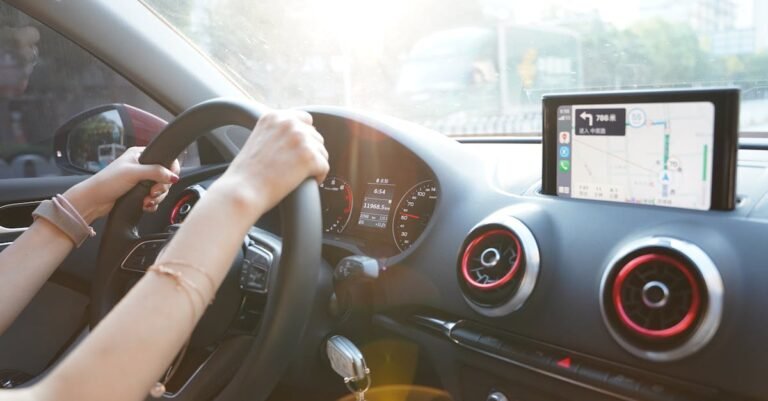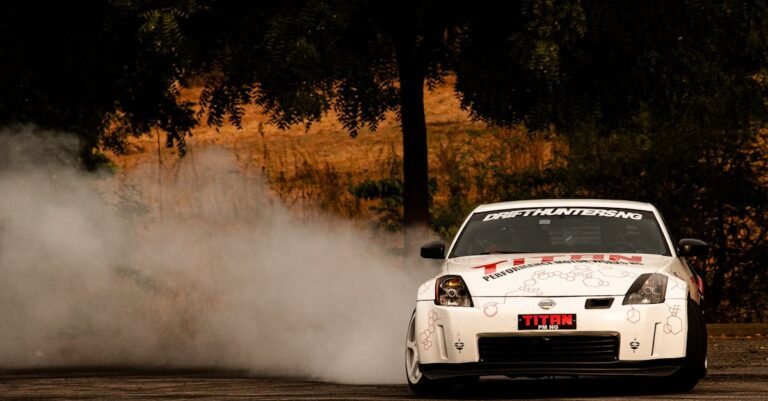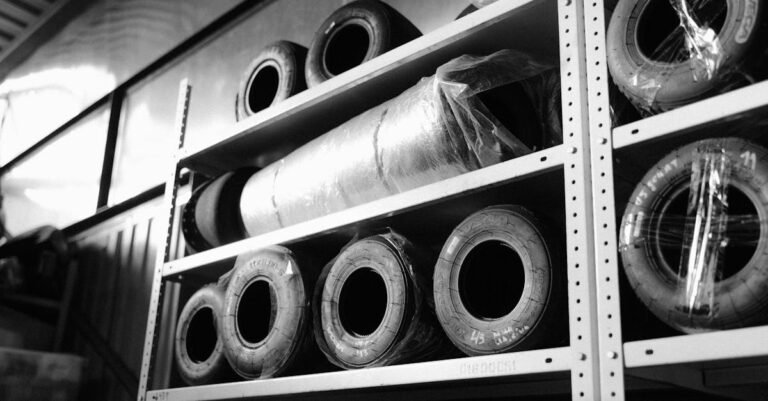Table of Contents
- Kids Car Safety Seats Explained
- Why Car Seats are Absolutely Non Negotiable
- Decoding the Car Seat Lingo: What Does It All Mean?
- Types of Car Seats: A Detailed Breakdown
- Installation: Getting It Right is Crucial
- Choosing the Perfect Seat for Your Little One
- Beyond the Basics: Important Considerations You Can’t Ignore
- Conclusion: Your Child’s Safety is Worth the Effort
- Frequently Asked Questions (FAQs)
Kids Car Safety Seats Explained
Okay, let’s talk about something super important: keeping our little ones safe in the car. It feels like just yesterday you were bringing home this tiny bundle, and suddenly you’re navigating the world of car seats. Confusing? You bet! With all the different types, rules, and acronyms floating around, it’s easy to feel overwhelmed. But here’s the thing – getting car seat safety right isn’t just a good idea, it’s one of the most critical things you’ll do as a parent. Think of this guide as your friendly co pilot, here to help you understand everything you need to know about kids’ car safety seats, from those first infant carriers to the booster seats they’ll eventually graduate from. Ready to buckle up and dive in?
Why Car Seats are Absolutely Non Negotiable
Let’s get real for a second. Why all the fuss about car seats? Can’t you just hold your baby tightly? Absolutely not. It sounds harsh, but the physics of a car crash are brutal. Even in a low speed collision, the forces involved are immense, far greater than anyone can withstand while holding a child. A car seat is specifically engineered to absorb and distribute those crash forces, protecting your child’s fragile body, especially their head, neck, and spine. It’s not just about following the law (though that’s important too!); it’s about physics and protecting your most precious cargo. Statistics consistently show that using the correct car seat significantly reduces the risk of serious injury or fatality in a crash. It’s the single most effective thing you can do to protect your child while traveling by car. Think of it like a superhero’s suit of armor, custom built for your little sidekick.
Decoding the Car Seat Lingo: What Does It All Mean?
Before we dive into the different types of seats, let’s quickly translate some of the common terms you’ll encounter. It can feel like learning a new language!
- LATCH: Stands for Lower Anchors and Tethers for Children. It’s a system built into newer vehicles (since 2002) and car seats designed to make installation easier and more secure without using the vehicle’s seat belt. You’ll see lower anchor points usually tucked into the vehicle seat crack and a top tether anchor point often behind the vehicle seat.
- Harness: These are the straps that hold your child securely in the car seat. Most seats for infants and toddlers use a 5 point harness (two straps over the shoulders, two at the hips, and one between the legs).
- Chest Clip: This plastic clip connects the two shoulder straps of the harness. Its job is to keep the harness straps positioned correctly over your child’s shoulders. Crucial placement tip: It should always be at armpit level. Too low, and your child could be ejected in a crash; too high, and it could cause neck injury.
- Convertible Seat: A versatile seat that can often be used rear facing for infants and younger toddlers, and then “converts” to forward facing for older toddlers and preschoolers.
- Combination Seat: A seat that starts as a forward facing seat with a 5 point harness and later transitions into a belt positioning booster seat (using the vehicle’s seat belt).
- All-in-One Seat: Designed to be the only seat you might need, transitioning from rear facing to forward facing with a harness, and finally to a booster seat.
- Booster Seat: Used for older children who have outgrown their forward facing harness seats but are still too small for the vehicle’s seat belt to fit correctly. Its purpose is to “boost” the child up so the lap and shoulder belt lie properly across the strong parts of their body.
Phew! Knowing these terms will make navigating the car seat aisle (and the rest of this guide) much easier.
Types of Car Seats: A Detailed Breakdown
Not all car seats are created equal, and the right one for your child depends primarily on their age, weight, and height. Let’s break down the main categories.
Rear Facing Seats: The Gold Standard for Infants & Toddlers
This is where every child starts their car seat journey. Staying rear facing for as long as possible is the safest way for infants and young toddlers to ride.
Why Rear Facing is Safest: Protecting Tiny Spines
Why is rear facing so crucial? Imagine your baby’s body proportions. They have relatively large heads and underdeveloped neck and spine muscles. In a frontal crash (the most common type), a forward facing child’s head is thrown violently forward, putting immense stress on their neck and spine. A rear facing car seat acts like a protective cocoon. During a crash, the child’s entire body – head, neck, and spine – is cradled and supported by the back of the car seat, distributing the crash forces over a much larger area. Think of it like catching a fragile egg in a perfectly shaped cushion versus letting it hit a hard surface. The American Academy of Pediatrics (AAP) and safety experts worldwide recommend keeping children rear facing until they reach the maximum height or weight limit allowed by their car seat manufacturer, often well past their second birthday.
Infant Carriers vs. Convertible Seats: What’s the Difference?
When you first bring your baby home, you’ll typically use one of two types of rear facing seats:
- Infant Car Seat (Carrier): These seats are designed specifically for newborns and younger infants, usually up to 22 35 pounds, depending on the model. They consist of a carrier that clicks into a base installed in the car. This is super convenient because you can easily carry the baby in the seat without waking them. They are always used rear facing.
- Convertible Car Seat: These seats can “convert” from rear facing for infants and toddlers to forward facing for older children. They have higher rear facing weight and height limits than most infant seats, allowing your child to stay rear facing longer. While you can use them from birth (many come with infant inserts), they stay installed in the car and aren’t portable like infant carriers.
Many parents start with an infant carrier for convenience and then transition to a convertible seat when the baby outgrows the carrier or when they want to keep them rear facing for longer.
When Should You Turn Them Around? (Hint: It’s Not Just Age!)
This is a big question for many parents! Forget the old advice about turning your child forward facing at age one or two. The *only* factors determining when to switch from rear facing are your child’s weight and height compared to the limits specified on your specific car seat. Check the labels and manual for your convertible seat’s rear facing limits. Keep your child rear facing until they reach EITHER the maximum weight OR the maximum height allowed for that mode. Often, children will outgrow the seat by height (usually when their head is within one inch of the top of the car seat shell) before they reach the weight limit. Resist the urge to turn them around early just because their legs look cramped – kids are flexible, and bent legs are perfectly safe in a crash, unlike an unprotected spine.
Forward Facing Seats: The Next Step Up
Once your child has truly maxed out the rear facing limits of their convertible seat (by height or weight), it’s time to transition them to forward facing, *still using a 5 point harness*.
Understanding the 5 Point Harness: Your Child’s Safety Net
Why stick with the harness? The 5 point harness is crucial because it secures your child at the strongest points of their body (shoulders and hips) and spreads the crash forces over a wider area than a regular seat belt can for a small child. It also helps prevent ejection from the seat in a crash. Make sure the harness straps are snug – you shouldn’t be able to pinch any slack horizontally at the collarbone (the “pinch test”). The harness straps should be threaded through the slots that are at or just *above* your child’s shoulders for forward facing. And remember that chest clip? Keep it at armpit level!
Knowing When Your Child is Ready for Forward Facing
Again, this isn’t about age. Your child is ready to move to a forward facing seat *with a harness* only when they have exceeded the rear facing height OR weight limit of their convertible car seat. Don’t rush this transition! Every extra day or week they spend rear facing offers them significantly more protection. When you do make the switch, ensure you re install the seat correctly according to the forward facing instructions in the manual, always using the top tether for added stability.
Booster Seats: Bridging the Gap to Seat Belt Safety
After outgrowing the forward facing harness seat (again, based on the seat’s height and weight limits, often around 40 65 pounds), your child isn’t usually ready for the vehicle seat belt alone. Enter the booster seat!
A booster seat’s job is simple: it elevates your child so that the vehicle’s lap and shoulder belt fit them correctly. A proper fit means the lap belt lies low and snug across the upper thighs (not the tummy), and the shoulder belt lies snug across the center of the shoulder and chest (not cutting into the neck or slipping off the shoulder). Why is this important? An improperly positioned seat belt can actually cause serious internal injuries in a crash.
High Back vs. Backless Boosters: Making the Choice
Boosters come in two main styles:
- High Back Booster: This type provides head and neck support, which is especially important in vehicles without headrests or with low seat backs. They often have guides to help position the shoulder belt correctly and can offer some side impact protection. Many combination seats convert into high back boosters.
- Backless Booster: This is essentially a cushion that lifts the child up. It’s lightweight, portable, and less expensive. However, it offers no head or neck support, so it should only be used in vehicle seats that have adequate headrests. It also lacks the shoulder belt guides found on most high back models.
A high back booster is generally recommended, especially for younger children transitioning into a booster, due to the added support and belt positioning features. However, a backless booster is still much safer than no booster at all if it ensures proper seat belt fit.
The 5 Step Test: Is Your Child Ready for the Seat Belt Alone?
How do you know when your child can finally ditch the booster seat? It’s not about age (are you sensing a theme here?) or even just hitting a certain height or weight on a chart. It’s all about how the vehicle’s seat belt fits their individual body in your specific car. Use this 5 Step Test:
- Does the child sit all the way back against the vehicle seat?
- Do the child’s knees bend comfortably at the edge of the vehicle seat?
- Does the lap belt naturally sit low across the upper thighs (not the stomach)?
- Does the shoulder belt naturally sit centered on the shoulder and chest (not on the neck or slipping off)?
- Can the child stay seated like this for the entire trip?
If the answer to *all five* questions is yes, then your child might be ready to use the seat belt alone. Most kids don’t pass this test until they are between 10 and 12 years old and are at least 4 feet 9 inches tall. Until then, keep them in that booster!
Installation: Getting It Right is Crucial
Here’s a sobering fact: a huge percentage of car seats are installed or used incorrectly. An improperly installed car seat might not protect your child in a crash. It’s like having the best suit of armor but not buckling it up properly! Reading both your car seat manual AND your vehicle owner’s manual is absolutely essential. There are two main ways to install a car seat:
LATCH System Explained: Those Lower Anchors and Tethers
LATCH (Lower Anchors and Tethers for Children) was designed to simplify installation. Lower anchors are metal bars found in the crease between your vehicle’s seat cushions. Your car seat will have connectors (either hook style or push on connectors) that attach to these anchors. The top tether is a strap on the back of convertible, combination, and forward facing only seats that connects to a tether anchor point in your vehicle (location varies – check your vehicle manual!). The top tether is *critical* for forward facing seats as it significantly reduces head movement in a crash.
Important Note: LATCH systems have weight limits! This limit includes the weight of the child PLUS the weight of the car seat itself. Once this combined weight limit is reached (check both manuals!), you MUST install the car seat using the vehicle’s seat belt instead, but *continue to use the top tether* for forward facing seats.
Using the Vehicle Seat Belt: The Tried and True Method
Installing with the vehicle seat belt is just as safe as using LATCH, *if done correctly*. Carefully thread the seat belt through the correct belt path on the car seat (there’s usually a different path for rear facing and forward facing). Then, buckle the seat belt and – this is key – engage the seat belt’s locking mechanism to hold the car seat tightly. Most newer vehicles have seat belts that lock automatically when you pull them all the way out and then let them retract slowly (you’ll often hear a clicking sound). Older vehicles might require using a locking clip. Check your manuals! Once installed, the car seat should not move more than one inch side to side or front to back when you test it at the belt path.
Common Installation Mistakes (And How to Avoid Them!)
Even with the best intentions, mistakes happen. Here are some common ones:
- Seat is too loose: Not tightening the LATCH straps or the seat belt enough. Remember the one inch movement test at the belt path.
- Incorrect recline angle (rear facing): Most seats have an indicator to help you get the angle right. Too upright is unsafe for infants who lack head control; too reclined might not offer optimal protection.
- Wrong belt path used: Using the forward facing path for rear facing installation, or vice versa.
- Harness too loose or chest clip misplaced: Remember the pinch test and armpit level rule.
- Forgetting the top tether (forward facing): This dramatically increases safety. Use it!
- Using LATCH beyond weight limits: Switch to seat belt installation when required.
- Using LATCH and seat belt simultaneously (unless specifically allowed by BOTH manuals): Pick one method.
If you’re unsure about your installation, don’t guess! Find a certified Child Passenger Safety Technician (CPST) in your area. Many fire departments, police stations, or hospitals offer free car seat checks. It’s worth the peace of mind.
Choosing the Perfect Seat for Your Little One
With so many options, how do you pick the best one? It’s not always about the most expensive seat.
Key Factors to Consider: Beyond Just Age and Weight
- Child’s Age, Weight, and Height: This determines the *type* of seat needed (rear facing, forward facing, booster). Always choose a seat that fits your child right now, while allowing room to grow within that stage.
- Your Vehicle: Does the seat fit well in your car? Not all seats fit well in all vehicles. Try installing it before you buy, if possible. Consider how many car seats you need to fit across the back seat.
- Ease of Use: Will *you* be able to install and use it correctly every single time? Look for features like clear belt paths, easy to adjust harnesses, and simple LATCH connectors if that’s your preferred method.
- Budget: Car seats range widely in price. While higher priced seats might offer extra convenience features or plusher fabrics, all seats sold legally in the US must meet the same strict safety standards. Choose the best seat you can afford that fits your child and vehicle and that you can use correctly.
- Safety Features: Look for features like side impact protection and energy absorbing foam.
Understanding Safety Standards and Labels: Read the Fine Print!
In the United States, all car seats must meet Federal Motor Vehicle Safety Standard (FMVSS) 213. Look for a sticker on the seat confirming it meets these standards. Also, pay close attention to the labels that specify the height and weight limits for each mode of use (rear facing, forward facing, booster). Don’t forget to register your car seat with the manufacturer! This ensures you’ll be notified of any safety recalls.
Beyond the Basics: Important Considerations You Can’t Ignore
Okay, we’ve covered the main types and installation. But there are a few more crucial details.
Car Seat Expiration Dates: Yes, They’re Real!
It might sound strange, but car seats expire, usually 6 to 10 years after the date of manufacture (check the label!). Why? Plastic degrades over time due to temperature fluctuations and sunlight exposure, becoming brittle and less able to withstand crash forces. Safety standards also evolve, and older seats might not meet the latest requirements. Using an expired seat is a safety risk – always check the date!
The Deal with Used Car Seats: Buyer Beware?
While getting a bargain is tempting, be extremely cautious with used car seats. You need to know its full history: Has it been in a crash (even a minor one can compromise its integrity)? Is it expired? Does it have all its parts and the instruction manual? Are there any recalls on it? Unless you know and trust the previous owner implicitly and can verify all these things, it’s generally safest to buy a new car seat.
Traveling with Car Seats: Tips for Planes, Trains, and Automobiles
Yes, you should use your car seat on an airplane! It’s the safest way for your child to fly. Look for an FAA approved sticker on your seat. Most US seats are approved. Check with your airline about policies. When renting a car, bringing your own seat is usually best, as you know its history and how to install it. Renting seats can be risky (condition unknown, might lack manuals). Consider lightweight, travel friendly car seat options if you travel frequently.
Keeping It Clean: Grubby Seats and Safe Cleaning
Kids and messes go hand in hand! Refer to your car seat manual for specific cleaning instructions. Most covers can be machine washed on a gentle cycle and air dried. The harness straps usually require spot cleaning with mild soap and water – *never* machine wash or submerge harness straps, as this can weaken the fibers. Avoid harsh chemicals or bleach. Keeping the buckle clean is also important; crumbs can prevent it from latching securely.
Conclusion: Your Child’s Safety is Worth the Effort
Wow, that was a lot of information, wasn’t it? Navigating the world of car seats can feel like a full time job sometimes. But here’s the bottom line: using the right car seat, installed correctly, and used properly every single time is absolutely vital for your child’s safety. From choosing the right type based on their size, to meticulously following installation instructions, to knowing when it’s time to transition to the next stage – it all matters. Don’t be afraid to ask for help from a certified technician if you’re unsure. Investing the time and effort to get car seat safety right provides invaluable protection for your little one on every journey. So buckle them up safely, and enjoy the ride!
Frequently Asked Questions (FAQs)
1. Is it safe for my child’s legs to touch the back of the vehicle seat when rear facing?
Yes, absolutely! Children are very flexible. Bent or crossed legs are perfectly comfortable and safe for them while rear facing. Leg injuries are extremely rare for rear facing children in crashes. The most important thing is protecting their head, neck, and spine, which rear facing does best. Don’t turn them forward facing just because their legs look cramped to you.
2. Can I add toys or aftermarket padding/inserts to my child’s car seat?
Generally, no. You should only use products that came with your car seat or are specifically approved by the car seat manufacturer for use with that model. Aftermarket products (like extra padding, harness covers that didn’t come with the seat, or hanging toys) have not been crash tested with your seat and could interfere with its performance or the harness fit, potentially causing injury in a crash.
3. What should my child wear in the car seat, especially in winter?
Avoid bulky winter coats or snowsuits. Thick padding can create too much slack in the harness, making it ineffective in a crash. Instead, dress your child in thinner layers (like fleece). Buckle them into the harness snugly, then place a blanket or their coat over them *outside* the harness straps for warmth. You need the harness to be tight against their body.
4. My car seat was in a minor fender bender. Do I need to replace it?
It depends. Some manufacturers say to replace the seat after *any* crash, while others follow specific NHTSA guidelines (considering factors like crash severity, airbag deployment, visible damage, etc.). Your best bet is to check your car seat manual for the manufacturer’s specific recommendations regarding replacement after a crash. When in doubt, replace it. Many insurance companies will cover the cost.
5. Where is the safest place in the car to install the car seat?
The center of the back seat is statistically the safest spot, as it’s furthest from any potential point of impact. However, a secure installation is paramount. If you cannot get a tight, correct installation in the center seat (sometimes due to a hump or lack of LATCH anchors), then installing the car seat correctly on either the driver’s side or passenger’s side rear seat is still very safe. The safest position is the one where you can achieve the best possible installation.









